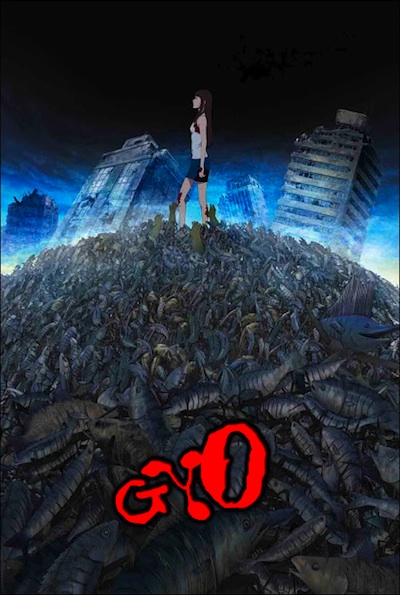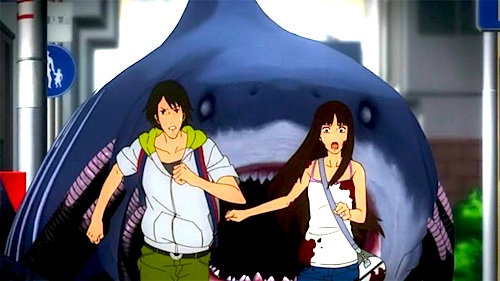 By Joe Bendel. The end of the world is nigh and it smells like feet. Mutant fish flatulence is a tough way for humanity to go out, but it looks like our number is up, nonetheless. Prepare yourself for a messy apocalypse in Takayuki Hirao’s Gyo (trailer here), which must be poised on the brink of taking the world by storm after it screened yesterday as a co-presentation of the 2012 Japan Cuts and New York Asian film festivals.
By Joe Bendel. The end of the world is nigh and it smells like feet. Mutant fish flatulence is a tough way for humanity to go out, but it looks like our number is up, nonetheless. Prepare yourself for a messy apocalypse in Takayuki Hirao’s Gyo (trailer here), which must be poised on the brink of taking the world by storm after it screened yesterday as a co-presentation of the 2012 Japan Cuts and New York Asian film festivals.
Kaori and her friends are spending their last spring break together vacationing in Okinawa. This will not be a good time to be near the water. Kaori is hot but nice. Erika is hot and mean. Aki, the third one, is plain and dumb. They will act accordingly throughout the impending crisis. It turns out the trio is on the front line. They are the first to record an encounter with the stinky fish with strange bio-mechanical legs. It turns out there were plenty more where that one came from and they have already overrun Tokyo.
Fearing the worst from a disconnect with her fiancé Tadashi, Kaori rushes back to the fish-battered city, hooking up with Shirakawa, an only slightly sleazy photojournalist. Ostensibly acting as her protector, Shirakawa really wants to get a story from Tadashi’s at least partially mad scientist uncle, who has apparently become the world’s preeminent authority on “walking fish” in a matter of hours.
Nothing says End of Days like hordes of walking fish cascading over Tokyo’s boulevards. However, it is the death stench that is the real poison, mutating humans through their open wounds. It looks like it is payback time for all that sushi Japanese chefs served up.
By the way, Gyo is not for kids. As if all the mutant mayhem were not enough of a red flag for parents, let’s just say Kaori’s friend Erika is kind of a tramp. It did not screen as part of the Anime from Hell sidebar for nothing. Considering how gleefully notorious it will surely become, Gyo is sure to be picked up by other festivals, so you’ve been warned.

Give Gyo credit—it takes the wild premise of Junji Ito’s manga and runs with it. There are times it plays like the anime equivalent of a Roger Corman film, but how can that be a bad thing? To Gyo’s further credit, it features a strong female protagonist, though it would probably be a stretch to call it empowering, unless you’re a fish. It should also be noted those mutant farting fish seem to be the result of a nefarious Imperial Japanese research project during WWII. Frankly, North Korean lunacy would be a more likely culprit, but it is just nice to see this one not blamed on the American military, as in Bong Joon-ho’s overrated The Host.
This is a good film to see with an audience. Indeed, it is surely fair to say most of the patrons at the Japan Society felt they got their money’s worth, even if nobody will be mistaking it for a Miyazaki film anytime ever. Worthy of a long run of midnight festival screenings, Gyo was an entertaining bit of strangeness for this year’s NYAFF and Japan Cuts: The New York Festival of Japanese Cinema.
Posted on July 17th, 2012 at 2:29pm.